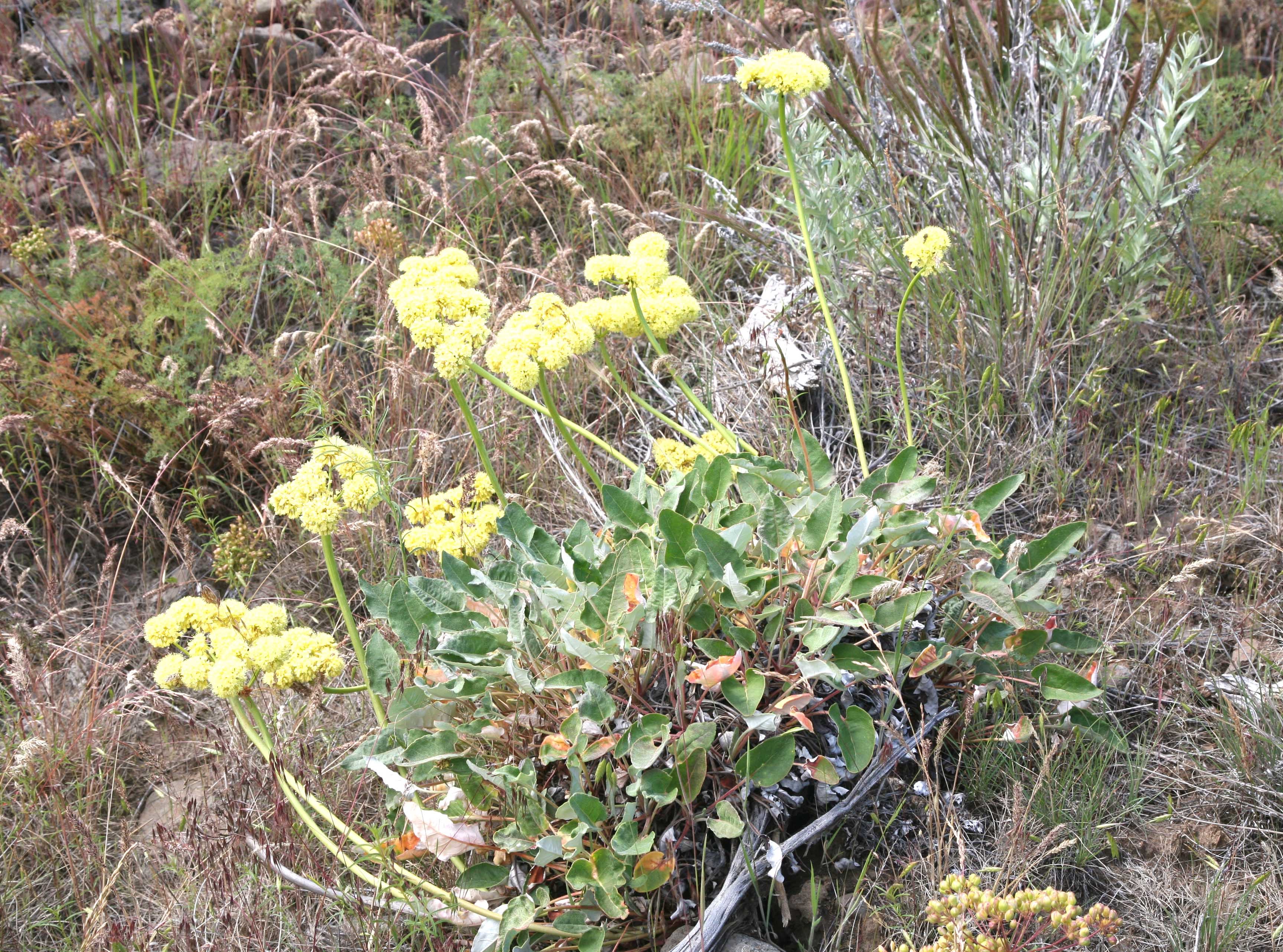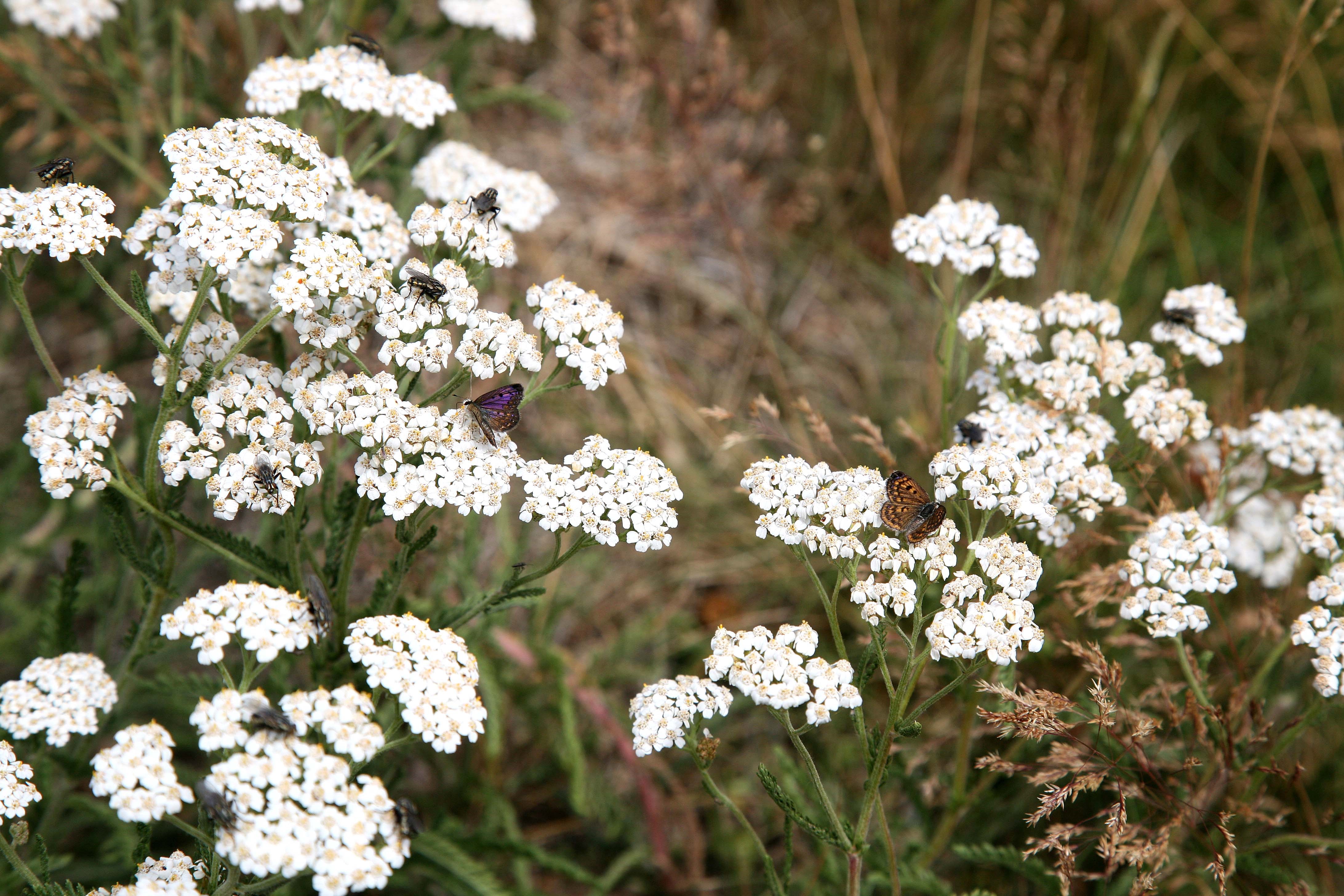A summary of a presentation by David James, WSU Entomology at WSU Tree Fruit Days 2019. Written by Tianna DuPont, WSU Extension.
Beneficial insects need food and refuge. Adding native plants back into our orchard landscapes can provide important resources for the natural enemies that protect our crops. WSU researcher David James has studied more than 100 perennial plants native to Central Washington to learn which native plants beneficial insects prefer. Early successes with plantings in vineyards demonstrate that native ground covers in orchards may bring in beneficial insects and provide pest control.
Why native plants?
Native plants are hardy and adapted to the environment. They don’t need special attention and can survive with minimal water and nutrition. They don’t need anything from us. They are home for beneficial insects and provide many of the food resources they need.
Which native plants?
James’ team studied 120 species of flowering natives to determine which plants insects were visiting. In order to measure the attractiveness of multiple native plants they used clear sticky traps placed on the native plants and then took them back to the lab to count and identify the insects that visited the plants. With nine to twenty-four traps per species of plant for four years they looked at more than twelve thousand traps, a phenomenal effort.
Interestingly they learned that many of these plants were visited by beneficial insects even when they were not flowering. This is likely because the plants are providing refuge – protection from the sun, rain and predators; not just food resources.
Several plant species were clear winners based on the total numbers of beneficial insects that visited them. The top ten were: Sagebrush, Gray Rabbitbrush, Oregon Sunshine, Western Clematis, Northern Buckwheat, Showy Milkweed, Slender Hawksbeard, Tall Buckwheat, Yarrow and Snow Buckwheat.
Sagebrush

Sagebrush was number one with an average of 500 beneficial species per trap. Sagebrush is home. Just being present on the landscape is enough to draw in native beneficial insects. The plants do not have to be in flower. Interestingly, very few pests were found in sagebrush. However, it is only attractive to five of the ten groups of insects James’ group was interested in. Sagebrush is home primarily to parasitic wasps as well as a predatory true bugs like minute pirate bugs and mirids.
Rabbit Brush
Many are familiar with Rabbit Brush known for its bright yellow flowers in autumn. Compared to sagebrush, rabbitbrush attracts a wide diversity of insects.
Western Clematis Clematis ligusticifolia
Western Clematis is a summer flowering plant. James showed it attracts a diversity of beneficial insects. Nine of the ten beneficial insect groups were found on clematis.
Buckwheats Erigonum spp.

There are several species of native Buckwheats. Don’t confuse these with the exotic buckwheats growers might plant as a cover crop or for grain. They are in an entirely different plant group. Native buckwheats are low growing hardy species which are extremely drought adapted. There are ten species of native buckwheats in Central Washington that range from spring to summer flowering. James showed that buckwheats are attractive to a wide range of beneficial insects. Buckwheats have a potential as ground covers because they can be cut and driven on. However, their intolerance to wet conditions may make them better suited to orchard edges rather than drive rows.
Yarrow Achillea millifolium

Yarrow was also in James’ top ten. Interestingly native yarrow was extremely attractive to a range of beneficial insects, but ornamental yarrows do not seem to be attractive. Yarrow attracted predatory true bugs, flies and parasitic wasps. Yarrow also showed potential as a ground cover. It can tolerate mowing which will stimulate re-flowering.
Showy Milkweed Asclepias speciosa
Showy Milkweed flowers for four to five weeks in the summer. It attracts eight of the ten groups of beneficial insects. Another candidate for ground covers, milkweed plants are quite robust and slightly more tolerant to wet as well as dry conditions.
Blanketflower Gaillardia aristata

Blanketflower also attracts a wide diversity of natural enemies.
Other
Additional highly attractive native plants included nettles; Choke Cherry, Prunus virginiana; and Spreading Dogbane, Apocynum androsaemifolium.
Native Plant Success in Vineyards
James’ team compared native plant enhanced vineyards to conventional vineyards to determine if incorporating natives into the farm could increase beneficial insects and control pests. Working with a group of eight cooperating growers, he was able to compare four habitat enhanced vineyards to four conventional vineyards. They found that that habitat enhanced vineyards had almost twice as many beneficial insects inside the vineyard than did conventional fields. The numbers of pests were also lower in habitat enhanced farms with 0.5 pests per leaf compared to more than 1.5 pests per leaf in conventional vineyards.
Potential for Native Plants in Orchards
James is proposing to look at incorporating native plants in orchards as well. The top picks for orchards right now are blanketflower, yarrow and showy milkweed. These three attract a large number and diversity of benficials and are more likely to stand up to traffic and mowing in the orchard.
References
James, D. G., Seymour, L., Lauby, G. and Buckley, K. (2015). Beneficial insects associated with stinging nettle in central Washington State. Pan-Pacific Entomologist
James, D.G., Seymour, L.S., Lauby, G. and Buckley, K. (2014). Beneficial insects attracted to native flowering buckwheats in central Washington. Environmental Entomology 43: 942-948.
James, D. G., Seymour, L., Lauby, G. and Buckley, K. (2016). Beneficial Insect Attraction to Milkweeds (Asclepias speciosa, Asclepias fascicularis) in Washington State, USA. Insects 2016: 7, 30.
Seed and Plant Sources
Rainier Seeds Ranierseeds.com
Derby Canyon Natives https://derbycanyonnatives.com/
Contact
Associate Professor
WSU Prosser IAREC
david_james@wsu.edu

